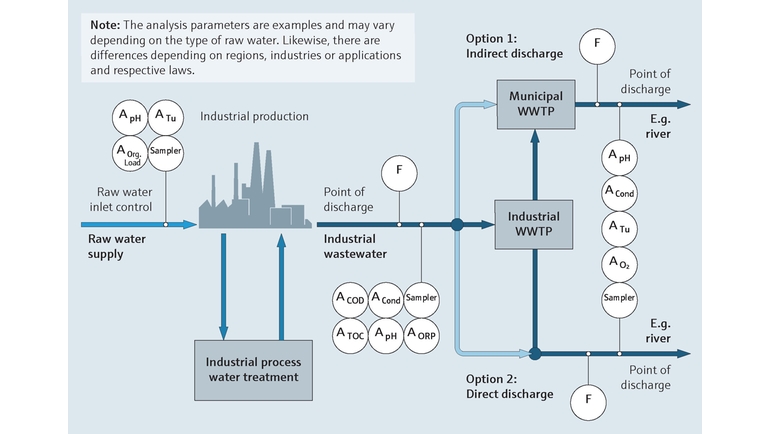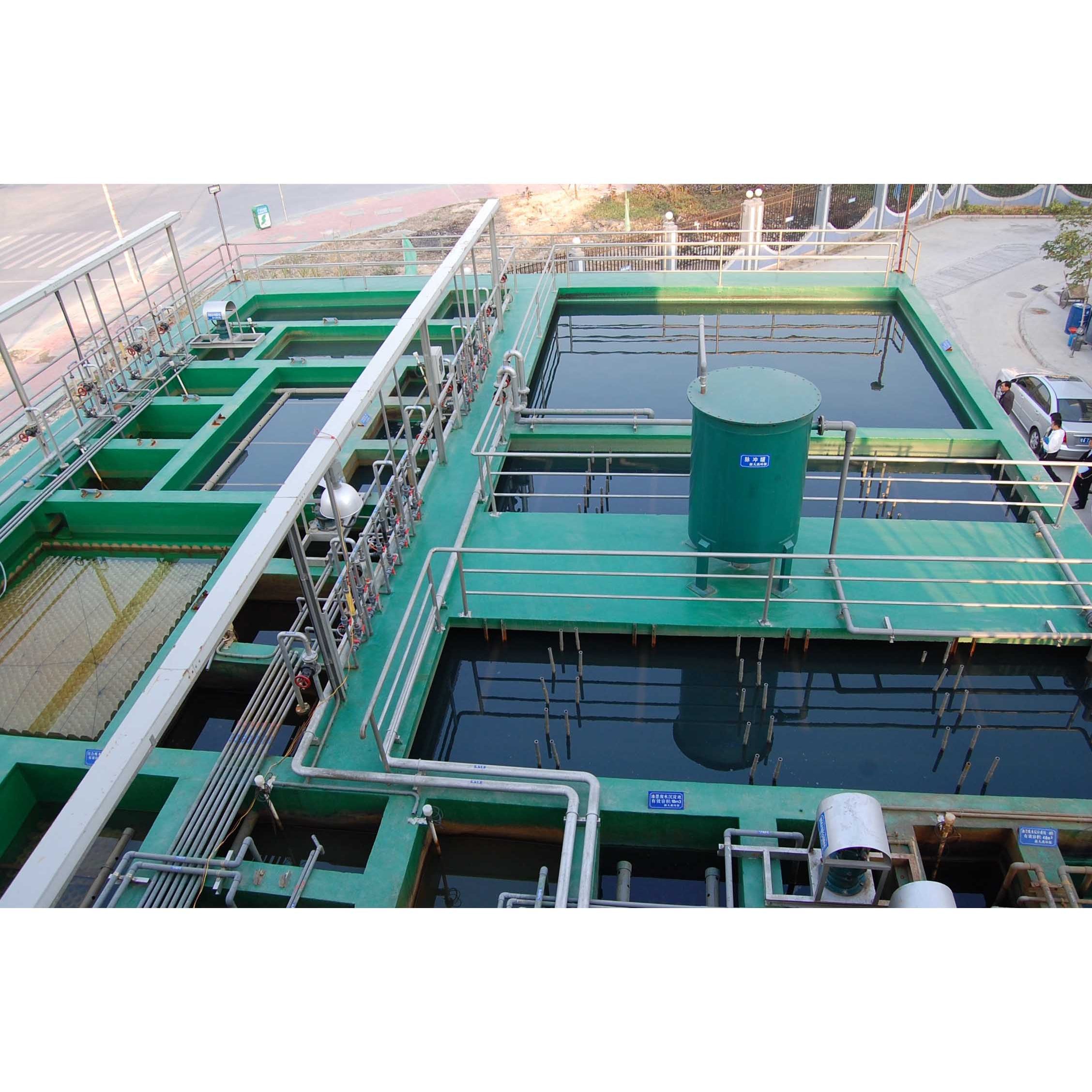Industrial Waste Water Treatment-- Sustainable Solutions for Industrial Water Administration
Wiki Article
Trick Strategies in Industrial Waste Water Treatment Processes
The therapy of industrial wastewater is a vital element of environmental monitoring, involving a variety of methods developed to reduce the impact of contaminants. From the essential physical methods that divide solids to the innovative chemical and biological processes that target particular contaminants, each strategy plays a crucial role in achieving water high quality standards. Advancements in innovations such as membrane purification and progressed oxidation processes supply ingenious remedies for enhancing therapy efficacy. Understanding just how these approaches adjoin and their effects for sustainability increases important concerns regarding the future of wastewater monitoring in market.Physical Therapy Methods
How successfully can physical treatment techniques attend to the intricacies of commercial wastewater? Physical therapy methods play an essential duty in the initial stages of wastewater administration, concentrating primarily on the removal of solids and huge particulates. Techniques such as flotation protection, filtering, and sedimentation are crucial for decreasing the concentration of put on hold solids, consequently improving the effectiveness of succeeding therapy procedures.Sedimentation entails the gravitational settling of solids, permitting for the splitting up of heavier products from the wastewater. This technique is particularly efficient in clearing up water prior to chemical or biological treatments.
In addition, flotation techniques, which use air bubbles to lift suspended solids to the surface area for removal, are effective in dealing with wastewater with high focus of fats, oils, and oils. Overall, physical treatment techniques work as an essential initial step in the thorough monitoring of commercial wastewater, making sure that the tons on succeeding treatment stages is reduced and improving total treatment effectiveness.
Chemical Treatment Methods
While physical treatment techniques prepared for effective wastewater management, chemical therapy strategies are necessary for resolving the much more intricate contaminants frequently discovered in commercial effluents. These methods make use of different chemical agents to speed up, reduce the effects of, or oxidize harmful compounds, making certain an extra comprehensive elimination of contaminants.
One common strategy is coagulation and flocculation, where chemical coagulants such as light weight aluminum sulfate or ferric chloride are contributed to promote the gathering of suspended fragments. This process improves solid-liquid separation, minimizing turbidity and enhancing water top quality. Additionally, neutralization procedures are used to change the pH of wastewater, using acids or bases to counteract acidic or alkaline streams, specifically.
Oxidation-reduction reactions play a crucial duty in degrading natural impurities and microorganisms. Chemical oxidants like hydrogen, chlorine, or ozone peroxide are utilized to damage down complicated organic substances, making them less dangerous or a lot more naturally degradable. Moreover, advanced oxidation processes (AOPs) incorporate several oxidation techniques to enhance pollutant elimination performance.
Biological Treatment Procedures
The efficiency of wastewater treatment is significantly improved by organic treatment procedures, which harness the all-natural metabolic activities of microorganisms to disintegrate raw material and eliminate toxins. Industrial Waste Water Treatment. These procedures mainly include aerobic and anaerobic digestion, each tailored for details kinds of wastewaterCardiovascular treatment processes use oxygen to sustain microbial development, advertising the malfunction of natural toxins right into co2 and water. Typical techniques consist of turned on sludge systems, where aeration storage tanks assist in the blending of wastewater with microorganisms, and flowing filters, which motivate biofilm advancement on media surfaces.
On the other hand, anaerobic therapy processes take place in the absence of oxygen, utilizing anaerobic germs to break down raw material, causing biogas production, a renewable resource resource. Anaerobic digesters are usually utilized in industrial setups for this purpose, successfully reducing the volume of sludge while generating valuable biogas.
The selection of a biological therapy technique relies Discover More Here on wastewater qualities, therapy goals, and regulatory requirements. The combination of biological processes in wastewater treatment not only improves pollutant removal performance however likewise advertises sustainability by lessening chemical usage and supporting resource recovery.
Advanced Oxidation Processes

Typical AOP strategies consist of Fenton's reagent, ozonation, and photocatalysis. Fenton's reagent, a mix of hydrogen peroxide and ferrous iron, militarizes the development of hydroxyl radicals, making it efficient for treating wastewater consisting of phenolic substances and other recalcitrant compounds.
AOPs use several benefits, including lowered sludge manufacturing and the capability to treat wastewater with high concentrations of natural pollutants. The implementation of AOPs needs mindful factor to consider of functional parameters and cost-effectiveness, making certain that these sophisticated methods are properly incorporated into existing wastewater treatment systems.
Membrane Layer Filtering Technologies

Microfiltration works for getting rid of put on hold solids and germs, while ultrafiltration targets smaller natural particles and viruses. Nanofiltration connects the space in between ultrafiltration and turn around osmosis, properly removing divalent ions and organic compounds. Reverse osmosis provides the highest degree of filtration, used mainly for desalination and removing mono-valent ions.
Membrane innovations offer many benefits, consisting of reduced power usage compared to standard treatment methods, modular design for scalability, and the possibility for water recuperation and reuse. Nevertheless, challenges recommended you read such as membrane fouling and the need for routine upkeep need to be addressed to ensure system efficiency. Overall, membrane layer purification modern technologies represent an important element of contemporary industrial wastewater treatment methods, advertising sustainability and resource conservation in water administration.
Conclusion
In final thought, commercial wastewater therapy employs a varied range of techniques, consisting of physical, chemical, biological, and progressed approaches. Each approach plays a vital role in effectively attending to different pollutants, enhancing water top quality, and advertising resource sustainability. The integration of these methods cultivates a detailed therapy method, making certain that industrial effluents fulfill regulative standards while minimizing ecological influence. Proceeded advancements in these methodologies will certainly better enhance the efficiency and performance of wastewater treatment processes in commercial setups.The treatment of industrial wastewater is a critical facet of environmental monitoring, including a range of methods designed to alleviate the influence of contaminants.Just how effectively can physical therapy methods attend to the complexities of commercial wastewater?Advanced oxidation processes (AOPs) represent an innovative technique in industrial wastewater therapy, made to properly break down natural contaminants that are typically resistant to standard therapy techniques (Industrial Waste Water Treatment).In verdict, commercial wastewater therapy employs a varied selection of methods, consisting of physical, chemical, biological, and progressed approaches. Proceeded developments in these approaches will certainly further improve the effectiveness and efficiency of wastewater treatment procedures in commercial setups
Report this wiki page